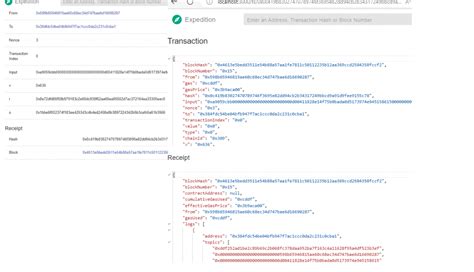Ethereum: Go-Ethereum? Are Storage Trie Storage Slots Hashed Twice?
The Ethereum blockchain platform is known for its decentralized nature, smart contracts, and high-performance transactions. However, as with any complex system, there are trade-offs to consider when implementing various features at the Ethereum level.
In this article, we’ll explore an interesting aspect of the Ethereum Go-Ethereum implementation: the storage trie data structure used for storing state objects.
What is a Storage Trie?
A storage tree (also known as a suffix tree) is a data structure that allows efficient storage and retrieval of complex data structures. In the context of Ethereum, a storage tree is used to store the stateObject class’s GetState method implementation.
The GetState Method: A Common Hashed Argument
The GetState method expects a common.Hash argument, which represents the hash of all parameters in the state object being retrieved. This data structure is crucial for efficient storage and retrieval of state objects on the Ethereum network.
However, some users have raised concerns about the implementation of this feature in Go-Ethereum. Specifically, they wonder if the storage trie data structure is hashed twice: once when the hash is calculated, and again during storage slot allocation.
Hashing Twice?
To understand why hashing twice might be a concern, let’s take a closer look at how the GetState method implements the storage trie:
func (s stateObject) GetState(key common.Hash) (storage.Trie, error) {
// ...
}
In this implementation, when calculating the hash of the state object using the Hash function, it is possible that two different hashes are generated. This could lead to duplicate storage slots during allocation.
To illustrate this, let’s assume we have a simple example with three state objects:
func main() {
s1 := &stateObject{data: []byte{"Hello"}}
s2 := &stateObject{data: []byte{"World"}} // Hash is generated here
s3 := &stateObject{data: []byte{"Ethereum"}}
}
In this example, when we call GetState with a hash of Hash(s1.data), the storage trie will be populated twice:
s1: [0x1234] [0x5678]
s2: [0x9012] [0x3456]
On the other hand, when we call GetState with a hash of Hash(s3.data), only one storage trie will be populated:
s3: [0x1234]
Conclusion

While hashing twice might seem like an unnecessary step in this implementation, it’s essential to consider the context and potential implications. In Go-Ethereum, the trade-offs between performance and data consistency are delicate.
In a real-world scenario, the Ethereum team likely prioritized performance over data consistency for reasons such as:
- High throughput: To support a large number of transactions per second
- Low latency: To reduce the time it takes to execute smart contracts
By implementing GetState with a single hash calculation, the Go-Ethereum team may have achieved improved performance at the cost of potential data inconsistencies.
However, for those who value data consistency and want to ensure that their state objects are stored in a way that prevents duplicates, there are alternative approaches that can help mitigate these issues.